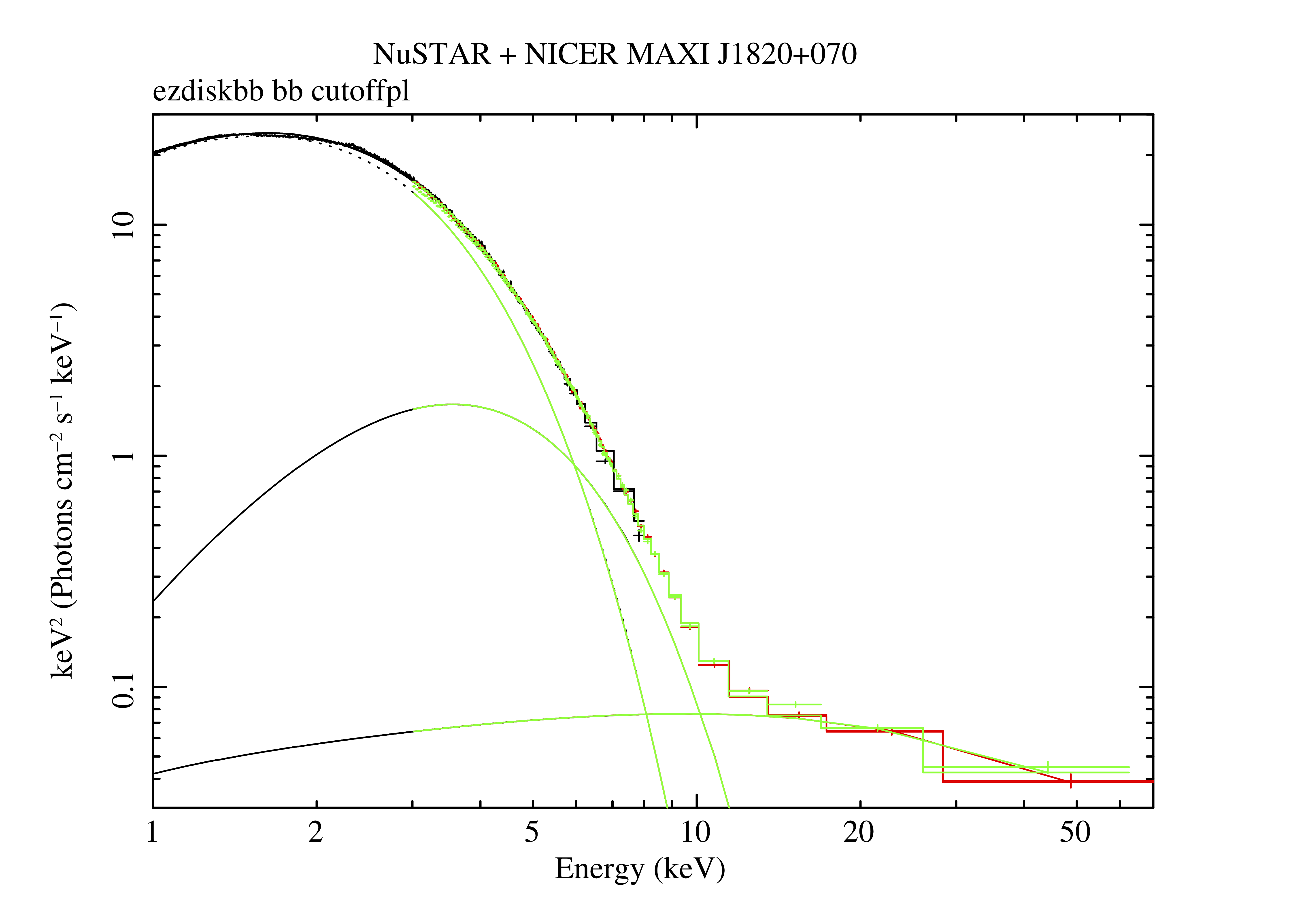NICER / ISS Science Nugget
for March 12, 2020
X-ray flaring in MAXI J1820+070 probes emission near black hole
A bright new X-ray source was found in March 2018 by JAXA's MAXI X-ray
camera on ISS. Now known as MAXI J1820+070, it lies in the constellation
of Ophiuchus, the Serpent Bearer. It was very bright for about 8 months,
during which it became the second-brightest X-ray source in the sky. An
optical counterpart was found and revealed a binary system consisting of
a normal star in close orbit about a 7 Solar-mass black hole. Gas from
the star is falling onto the black hole, releasing gravitational energy
that powers emission of X-rays. Optical and radio studies indicate that
it lies in the disk of our Galaxy at a distance of about 10,000
light-years.
Matter cannot fall straight onto the black hole because of its orbital
angular momentum, much as the Earth doesn't fall into the Sun and the
ISS doesn't fall onto the Earth. Instead, it forms an orbiting disk of
gas around the black hole, with magnetic viscous forces causing it to
spiral slowly inward, releasing gravitational energy into heat and thus
radiation. Einstein's General Relativity dictates, however, that the
orbiting disk must stop before reaching the black hole. Inside this
radius, known as the Innermost Stable Circular Orbit, or ISCO, matter
falls inward on short curved orbits into the black hole; this is known
as the plunge region, from which negligible radiation should emerge. A
rough analogy would be the top of a waterfall: if you are in a boat
approaching the waterfall your speed may be steady but as you go over
the edge you accelerate freely downward.
Repeated X-ray observations of MAXI J1820+070 were made with NICER and
NASA's freely-flying NuSTAR telescope. Both have photon-counting
detectors that are not blinded by high count rates like many other X-ray
detectors in orbit, and so are ideal. The source evolved from a hard
state dominated by high energy X-rays to a soft state, characterized by
the distinctive thermal spectrum from the dense hot gas of the accretion
disk, rising in temperature up to the ISCO. An additional, slightly
hotter, component was found in all the soft state observations. A
natural place to locate it is near the ISCO. Gas in the disk is so hot
that it is highly ionized and is expected to be magnetized as fields are
amplified in the turbulent and differentially-rotating disk flow.
Magnetic fields will slow gas at the start of the plunge region allowing
more gravitational energy to be released as heat and X-rays. This may
be what we have seen: the last gasp of radiation as gas begins to fall
freely into the black hole. This work, led by Prof. Andy Fabian of
Cambridge University in the UK, has been accepted for publication in the
Monthly Notices of the Royal Astronomical Society.

Figure:
X-ray spectrum of the black-hole binary MAXI J1820+070 in its soft
state, as measured with NICER (data: black points with error bars, and
model: solid black histogram and curve) and two independent NuSTAR
detectors (data: red and green points with error bars, and mode: red and
green histograms and curves). From top to bottom, the solid curves
originating at the left edge represent thermal emission from the
accretion disk, an additional high-temperature component likely arising
from the final "plunge region" near the event horizon, and high-energy
emission likely from hot gas in a "corona" above the disk.
Outbursts of the MAXI J1820+070 system were photographed on plates taken
in 1898 and 1934. It is still active now, although at a much reduced
level compared to 2018. A new bright outburst may occur in 40 years
time. In the meantime, we need to rely on outbursts from other, similar
objects.
<< Previous
Main Index
Next >>